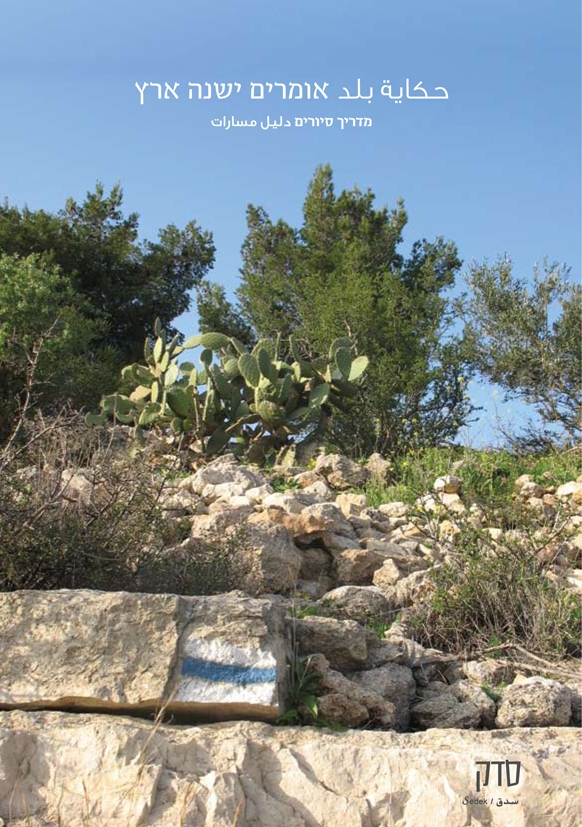This text was published first in Hebrew on October 13, 2012 here
The tours proposed in “Once Upon a Land” range from the north to the south. The first tour in the guidebook traces the remains of the villages of Albassa and Alzib in the western Galilee. Like others in the book it begins by describing the villages that once existed but are no more: the number of inhabitants, their means of livelihood, public buildings, the date it was captured, information about the current location of its refugees.
The tour, prepared by Ronen Ziv-Lee and Orna Marton, starts at the entrance to Medinat Achziv with a view of the remains of the neglected cemetery along the fence, a violation of the law protecting holy
sites.
I’ve visited the museum in Medinat Achziv many times. On one visit I even cleared stones awary from the fence, slept in the Geffen room overlooking the sea, and never considered who’d lived in the impressive structure before ’48. It never occurred to me that the museum was once the home of Achziv’s mukhtar, Sheikh Mahmoud Hassin Attiyah.
The alternative historiography, based on an interview with a resident of Albassa and on historical accounts by Walid Khalidi and Benny Morris, enables us to pierce the encompassing Zionist narrative. Who would have believed that in Albassa, with 3,500 residents, there was a college where one could learn printing trades and judicial procedure?
One advantage of the guidebook is that it investigates places well-known to most of its readers and uncovers the narrative that has been silenced: what hides behind the wall at the intersection of Ibn Gvirol and Arlozorov Street in Tel Aviv (the remains of the village of Sumeil), why is the “Green House” on the Tel Aviv University campus so different from the other buildings of Ramat Aviv (it was the home of one of the leaders of Sheikh Muwanis), and what’s behind the lovely stone building among the almond trees in the Jerusalem Hills (the remains of the village of Wallajah).
Norma Musih provides one possible explanation for the selective blindness to the vestiges of Palestine from which the Jewish inhabitants of this land suffer. In a chapter entitled “What I told my daughter as we toured Manshiyyeh,” Musih suggests thinking about the amorphous discomfort a person shopping in the Carmel Market feels when they hear the call of the muezzin from the Hassan Beq Mosque which is surrounded by parking lots and elegant hotels.
Musih refers to “the unthought known,” a concept developed by the psychoanalyst Christopher Bollas: “The meeting, in which the subject experiences the other, is what creates knowledge: in the case described by Bollas it’s the meeting of the patient with their therapist, and in the case of alManshiyyeh – when Israelis come face to face with the ruins of the neighborhood. That’s physical knowledge, first-hand knowledge, which sometimes becomes too much knowledge that doesn’t fit in with what we already know and is therefore repressed – but doesn’t disappear.”
Such identification is one of a number of distancing techniques the guidebook proposes when inviting readers to look around them. Rachel Leah Jones, for example, recommends viewing the houses of Ein Hod through bi-focals.
“Seeing bi-focally means seeing Israel/Palestine simultaneously: Like Israel/Palestine, what we see is very lovely – but also very ugly.” Jones suggests following the guided tour among the houses of the artists’ village, but imagining you’re refugees or uprooted Palestinians, and that one of the houses belonged to your grandfather.
This review can’t encompass everything the guidebook offers. The best idea would be to follow one of the tour routes. The book’s cover is reminiscent of Lonely Planet guidebooks. It details how to reach the sites by car or by public transportation, inviting you to look right at them. It would be good for Israeli high school pupils to be taken on these tours rather than the ones saturated with Zionist historiography promoted by Minister of Education Gid’on Sa’ar.
At the end of “Once Upon a Land”’s 509 pages are a few lined blank leaves – an invitation to the user to find out more, supplement the tours in the book or add new ones. Tomer Gardi, the editor, writes in his introduction: “The reader is called upon to recognize, to become aware of Palestine within Israel. To become conscious of the Palestinian nakba. To be mindful of it.”
In an afterword entitled “Not the last word,” Amal Akiya contextualizes the bi-lingual volume: “I don’t think ‘Once Upon a Land’ need be a bi-national project. The Nakba is a Palestinian national trauma. But this book represents an honest attempt by Israeli Jewish activists to recognize that trauma. Thus, two separate types of memory are operating. They’re not mutually exclusive, even if their form and the objects of their commemoration differ.”



